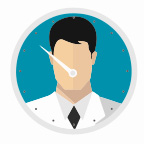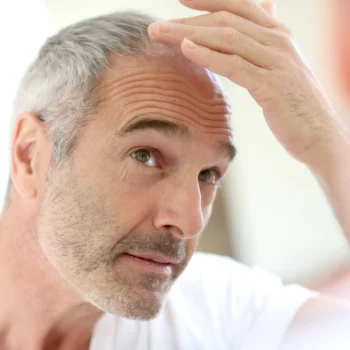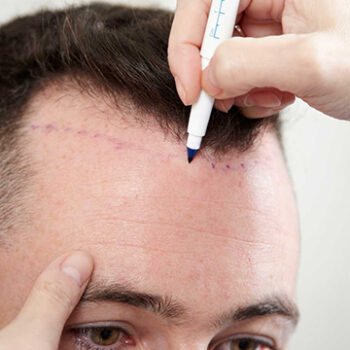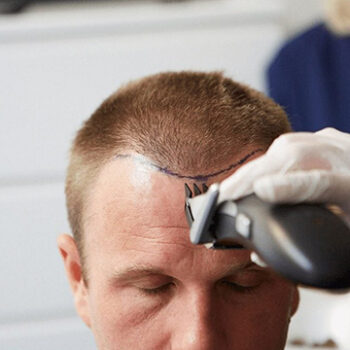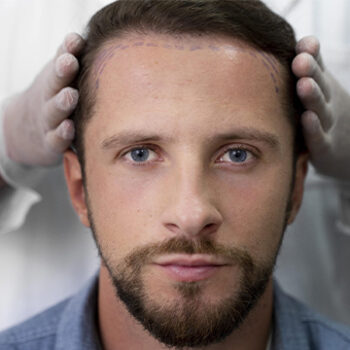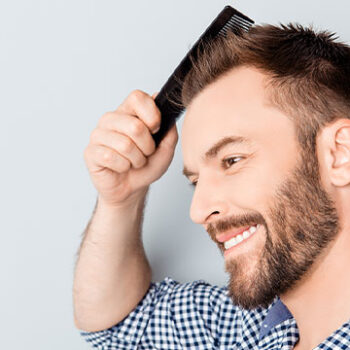Shaving the Donor Area After Hair Transplant: When Is It Safe and What Precautions to Take?
The donor area in a hair transplant procedure is as important as the transplanted site itself. Properly caring for the donor area and understanding when it’s safe to shave it after surgery can make a big difference in the overall success of the procedure. Since the donor area is the source of the hair follicles used for transplantation, maintaining its health is crucial for achieving natural-looking, long-lasting results. In this article, we’ll explore the right timing for shaving the donor area after a hair transplant and provide essential guidelines for a smooth recovery.
1. The First Days After Hair Transplant: Healing Process and Necessary Precautions
In the initial days after a hair transplant, both the transplanted area and the donor site are in a highly sensitive state. This early period is critical for healing, as any disruption could potentially harm the grafts or the donor area, prolong recovery, and affect the final results. Here’s what to keep in mind during the first days:
- Avoid Shaving or Any Form of Contact: During the first week, the donor area is still recovering from the procedure and requires a gentle approach. Refrain from shaving, trimming, or touching the area excessively. The newly implanted grafts and the donor site need time to settle and form a protective layer as part of the natural healing process. Even gentle handling can increase the risk of complications, so follow your doctor’s guidance closely.
- Prioritize Hygiene: Infection is one of the primary concerns after any surgery, and hair transplants are no exception. Keeping the donor area clean is essential to prevent infection. Use only doctor-recommended products, as they are designed to clean the area without causing irritation or disrupting the healing process. Avoid shampoos, conditioners, or any other products that have not been approved by your doctor, as certain ingredients could cause sensitivity in the donor area.
- Focus on Rest: Proper rest is vital during the initial recovery phase. Reducing physical activity and avoiding excessive movements that could lead to sweating or touching the scalp are key. Not only does rest speed up the healing process, but it also minimizes the risk of unintended contact with the donor or transplant sites. During this period, avoid situations where there’s a chance of the donor area getting bumped, scratched, or exposed to excessive heat or direct sunlight.
2. When Is the Ideal Time to Shave the Donor Area?
The timing for shaving the donor area depends on individual healing rates and specific post-operative instructions from your doctor. For most patients, the initial healing process is largely complete after about 3 to 4 weeks. At this point, the skin in the donor area has usually settled enough that a gentle shave may be considered, but only if approved by your doctor.
- Doctor’s Approval Is Key: Before shaving the donor area, consult with your doctor, as they are the best judge of your specific healing process. They will assess the donor site to determine if the skin has sufficiently healed. Even though general guidelines suggest waiting for at least a month, individual factors like skin type, the scope of the procedure, and any complications can influence the timeline. Your doctor’s approval is essential for minimizing risks.
- Why Waiting Matters: Allowing the donor area sufficient time to heal helps reduce the risk of complications and supports the natural growth cycle of the donor hair. If the area is shaved too early, it can interrupt the healing process and lead to adverse effects. Waiting until the scalp has recovered not only ensures a better aesthetic outcome but also reduces the risk of infection and other complications.
3. Risks of Shaving the Donor Area Too Early
While it may be tempting to resume shaving sooner, it’s important to be aware of the potential risks associated with shaving the donor area before it’s fully healed. Early shaving can cause several issues that may compromise the overall success of the hair transplant.
- Irritation and Infection: The donor area is still healing and remains sensitive to external influences in the first few weeks. Shaving too soon can introduce bacteria, leading to infections or irritation. Infections can complicate the healing process and may even impact the quality and growth of future hair in the donor area.
- Prolonged Healing Time: Shaving the donor area prematurely can disrupt the natural healing process, causing scabs to come off prematurely or reopening small incisions. This disruption can lead to prolonged healing times and potentially hinder the recovery of the area. Additionally, it could result in scarring or uneven skin texture, which may affect the appearance of the donor area in the long term.
- Impact on Aesthetic Results: One of the major risks of early shaving is the potential damage to the hair follicles in the donor area. Hair follicles are still in a vulnerable state shortly after the transplant. Any mechanical disruption, such as from shaving, could damage these follicles, leading to uneven hair regrowth or thinning in the donor area. By waiting until the scalp has fully recovered, you help ensure that the aesthetic results are preserved and that both the donor and transplanted areas heal optimally.
4. Importance of Following Your Doctor’s Recommendations
Each patient’s recovery process is unique, and there is no one-size-fits-all approach to post-transplant care. Therefore, it’s essential to follow your doctor’s specific recommendations regarding when to resume shaving and how to care for your donor area during recovery.
- Customized Care Based on Individual Healing: Your doctor will consider factors such as skin sensitivity, the extent of the transplant, and your overall health when providing recommendations. By following their advice, you’re supporting not only the healing process but also ensuring the longevity and appearance of your results.
- The Role of Patience in Recovery: While waiting to shave the donor area may seem inconvenient, patience is crucial for achieving the best possible results. Avoiding premature actions and sticking to your doctor’s advice will help maximize the outcome of your hair transplant. Over time, the donor area will strengthen, and you can safely resume shaving and other grooming routines without worrying about damaging the results.
- Continued Aftercare: After the initial healing period, continue to care for the donor area by following any aftercare instructions provided by your doctor. Avoid aggressive grooming practices and protect the area from potential irritants or trauma, especially in the months following the procedure. This consistent care can make a significant difference in the final outcome and ensure that both the transplanted and donor areas look natural and healthy.
Conclusion
Shaving the donor area after a hair transplant requires careful timing and consideration. By understanding the healing process, recognizing the risks of early shaving, and closely following your doctor’s recommendations, you can protect the integrity of the donor site and support the overall success of your hair transplant. The right timing, combined with patience and gentle care, will help you achieve optimal results that look natural and are built to last.

 English
English Français
Français Deutsch
Deutsch Türkçe
Türkçe 中國人
中國人
